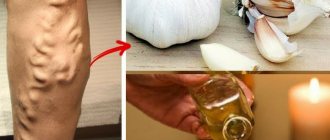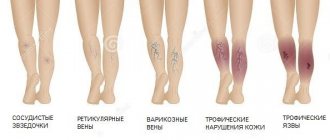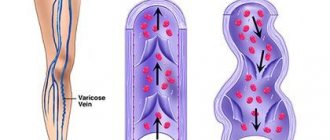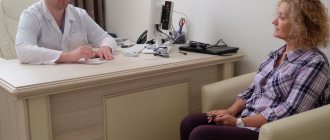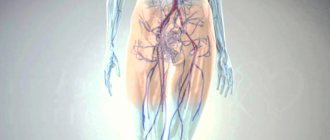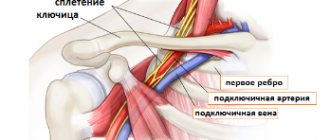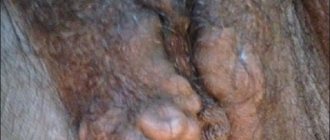Speaking about modern methods of treating varicose veins of the lower extremities, we can distinguish three fundamentally different medical approaches that do not replace, but complement each other. Each of these treatment areas has proven effectiveness, confirmed by good European clinical studies. All these techniques are used by specialists in Moscow, the Moscow region and other regions of Russia. Our phlebology center is no exception!
Treatment of varicose veins in a modern phlebology center
Modern European approaches to the treatment of varicose veins can be divided into the following groups: the first is conservative treatment of varicose veins, the second is surgical treatment of varicose veins and the third is sclerotherapy of varicose veins (scleroobliteration).
Varicose veins treatment. Conservative therapy
To the first group
conservative treatment applies. This type of therapy is used at all stages of varicose veins. It should be noted that in advanced stages of varicose veins, conservative therapy only complements the main treatment method: surgery, any endovenous innovative procedure or sclerotherapy (scleroobliteration).
Modern conservative treatment is aimed at strengthening the venous wall, eliminating venous stagnation and relieving the symptoms of chronic venous insufficiency (CVI). This group of treatment for varicose veins includes: phlebotonics (venotonic drugs), compression hosiery or compression bandages, variable pneumatic compression devices, electromyostimulators, manual lymphatic drainage massage procedures.
Phlebotonics and compression hosiery
Electromyostimulators and variable pneumatic compression devices
The main advantages of conservative methods are accessibility, the ability to carry out treatment at home, at a time convenient for the patient; you just need to consult a phlebologist. Conservative technologies have good therapeutic and preventive effects. Features of this treatment approach include:
- Conservative therapy, as a monotherapy, is effective only in the initial stages of the disease and for the prevention of varicose veins.
- In the presence of advanced forms of varicose veins of the lower extremities, such therapy is only complementary to more radical technologies.
Conservative treatment is successfully used by specialists from leading city phlebological centers and private clinics, as well as public hospitals in Moscow. Lastly, given the shortage of modern technologies, one can often note the disproportionate and unjustified use of conservative techniques. Perhaps the level of phlebological care in public health care could be significantly increased by improving interaction with good private medical centers. This applies not only to Moscow and the Moscow region, but also to any other region of our country.
Pharmacy help for varicose veins!
Chronic venous insufficiency (CVI)
- a disease known since the time of Hippocrates. At that time, this disease was called “a disease that knocks you down” and even then they tried to treat it surgically. Today, vein diseases are fought in a variety of different and even quite painless ways. Let's look at how to deal with chronic venous insufficiency using drugs from the pharmacy range.
Varicose veins most often mean dilatation of the superficial veins of the lower extremities, accompanied by valve incompetence and impaired blood flow. The prevalence of varicose veins is unusually wide.
In the initial stage, the disease manifests itself with a few and very nonspecific symptoms
:
• pain or feeling of heaviness in the legs; • burning sensation, pulsation; • night cramps in the calf muscles; • swelling and pain along the veins (often not yet dilated); • protruding veins, lumps in the legs, “webs” and “spider veins”; • slight swelling of the soft tissues, usually in the feet, ankles and lower legs.
In most cases, patients with varicose veins at the onset of the disease noted any of the listed symptoms. All these symptoms are usually more severe in the evening, after work, or during prolonged standing, especially in hot weather.
If left untreated, varicose veins can lead to serious consequences. Among them are blockage of blood vessels with blood clots, malnutrition of leg tissues, bleeding from varicose veins, hyperpigmentation of the skin, and trophic ulcers. Therefore, the question of how to maintain the condition of the veins and slow down the progression of this disease is relevant for many.
There are several factors that can lead to the occurrence of varicose veins:
• Constant work on your feet (pharmacists, teachers, athletes). • Work involving physical activity and heavy lifting. • Consequences of pregnancy. • Hereditary predisposition. • Sedentary lifestyle (overweight). • Bad habits (alcohol, smoking). • Taking hormonal medications.
In the modern world, it is not easy to eliminate all existing risk factors, so treatment of the disease must be comprehensive
• prevention of relapse of vein diseases; • preservation of working capacity; • improving quality of life (elimination of symptoms).
The main group of drugs are angioprotectors.
These drugs act on the cause of the disease, relieve vascular spasm, improve blood flow, normalize microcirculation and eliminate swelling. More often, therapy begins with external agents (Troxerutin DS, Venatrix, Venance Plus), subsequently adding drugs for internal use (Angiorus, Detralex). For the best effect, we recommend taking them together with herbal preparations. To maintain the elasticity of the capillary walls, Dihydroquercetin, Ascorutin, and Capilar are indicated. To relieve discomfort (pain, swelling, heaviness), you can use decongestants (Arnigel, Lyoton) and cooling agents for topical use (Afafrost, Simple recipe with menthol).
For varicose veins
in the evening, cramps of the lower extremities and a tingling sensation may often occur. To avoid these symptoms, you need to take calcium supplements (Calcium, Calcemin, Caldetrin, Calcium-D3 Nycomed). At an advanced stage of the disease, patients may experience itching and redness of the skin; to relieve such symptoms, we recommend antipruritic agents (Cikaderma, Akriderm, Neotanin).
To fix and support the veins, it is recommended to use compression hosiery of varying degrees of compression (elastic bandage, stockings, tights). Such products create measured pressure on the muscles and walls of the veins, narrowing the venous lumen, relieve swelling, accelerating the outflow of blood, and prevent the formation of blood clots. This measure is suitable for both treatment and prevention. To reduce the load on the lower limbs, it is recommended to use orthopedic or silicone insoles and heel pads.
Since excess weight is one of the factors in the development of varicose veins, we recommend means for regulating metabolism (Guarana and green tea complex, L-carnitine, Slim tabs). Products with low sugar content, bran and products containing fiber will be useful.
And remember that prevention of any disease is the easiest way to prevent it.
THERE ARE CONTRAINDICATIONS, YOU MUST READ THE INSTRUCTIONS OR CONSULT WITH A SPECIALIST.
Varicose veins treatment. Operative techniques, modern procedures
Second group
Methods for eliminating varicose veins of the lower extremities are surgical treatment. It should be noted that despite the rapid development of medicine, vascular surgery and phlebology in particular, the vast majority of public hospitals in our country still use highly traumatic operations (combined phlebectomy under anesthesia or spinal anesthesia) to treat varicose veins of the lower extremities in the sub- and decompensation stage ).
Classic (traditional) treatment of varicose veins
These technologies belong to classical venous surgery. Today they can hardly be called modern. In most cases, this is explained by the low cost of such operations compared to high-tech innovative interventions that require advanced equipment. However, in leading research centers and large private clinics, whose doctors have undergone internships with training in advanced European methods of treatment, they can offer patients innovative, low-traumatic methods, which would be more correctly called a procedure rather than an operation. Venefit™ RFO procedures and the Biolitec EVLT procedure are precisely such minimally invasive treatment of varicose veins
which do not require hospitalization, general or spinal anesthesia, skin incisions and long-term wearing of compression stockings in the postoperative period.
Radiofrequency generator for performing RFO procedure Venefit™
Laser generator for performing EVLO procedure Biolitec
Modern surgery for varicose veins means minimal surgical trauma, good and fast medical effect, quick rehabilitation and no relapse of the disease.
Consequences and complications of varicose veins
- thrombophlebitis;
- pulmonary embolism
(occurs unexpectedly, without any previous symptoms);
- trophic ulcers;
- bleeding from damaged veins;
- swelling of the legs, impaired blood supply to tissues, thickening and darkening of the skin, itching.
If signs of varicose veins appear, you should not delay visiting a phlebologist. The sooner the patient is examined, the higher the chance that the doctor will be able to treat varicose veins without pain and complications. Tablets, ointments and drugs can only give a temporary effect. Compression hosiery is an effective means of prevention. A phlebologist will help you choose the right type of knitwear and degree of compression.
The only way to get rid of varicose veins once and for all is through surgery. A carefully performed operation eliminates the possibility of relapse. The affected veins are removed or “glued together.” This is safe for the patient’s body, since no more than 5-10% of the blood flows through the saphenous veins, and the deep veins easily take on this load. There are traditional methods of surgical treatment of varicose veins and modern minimally invasive methods, which include:
- Radiofrequency obliteration (RFA/RFO)
- Sclerotherapy
- Miniphlebectomy
These methods are used by doctors at the Pirogov Clinic in St. Petersburg.
Varicose veins treatment. Sclerotherapy (scleroobliteration)
Third group
treatment is sclerotherapy (scleroobliteration) of the veins of the lower extremities. This treatment technology is used in very different clinical situations - from the elimination of cosmetic vascular defects (reticular veins and spider veins) to sclerosis of large veins of the lower extremities, including the trunks of main varicose veins. Drugs used for sclerotherapy of the veins of the lower extremities are injected into the lumen of the vein using ultra-thin needles with a diameter of 30 G (if we are talking about spider veins), or a slightly larger diameter when sclerosing the veins of the lower extremities of large “caliber”. In any situation, no significant pain syndrome is observed during sclerotherapy. Drugs injected into the lumen of the vein for the purpose of obliterating its lumen can be either liquid consistency or in the form of fine foam (Foam-Form). The Foam-Form method of scleroobliteration of the veins of the lower extremities is carried out by a phlebologist to remove large varicose veins, which allows the procedure to be carried out most effectively.
Sclerotherapy procedure for veins and spider veins
This technique appeared in our country relatively recently (about 10 years ago), but has established itself as objectively the best type of sclerotherapy for varicose veins of the lower extremities.
Today in Moscow, microsclerotherapy of spider veins and a foam form of scleroobliteration of varicose veins are used by a wide range of phlebologists in various medical phlebological centers. However, a seemingly simple procedure requires significant experience and specific skills to achieve a truly good result. Therefore, it is better to contact leading specialists at a good phlebological center in Moscow.
Master class on the treatment of varicose veins with sclerotherapy performed by Dr. Semenov A.Yu.
At the Moscow City Phlebological Center we use only the best technologies, and our specialists are experts in the modern treatment of varicose veins. The improvement of doctors' skills is measured in years and hundreds of successfully treated patients. Artyom Yurievich Semenov, leading specialist and head of the Moscow City Phlebological Center, is an international class phlebologist and a recognized European expert in the field of innovative technologies for the treatment of varicose veins.
The results of treatment of varicose veins using modern techniques at the Innovative Phlebological Center speak for themselves and some of them can be found on the page of my website:
Radiofrequency ablation (obliteration, RFA, RFO)
Treatment of varicose veins using radiofrequency equipment (RFA) is considered one of the most progressive techniques.
Laser treatment of veins in its medical and cosmetic effect approaches the characteristics of RFA, but loses for a number of reasons. Advantages of RFA over endovasal laser coagulation (EVLC)
- Radiofrequency equipment is modern and accurate, therefore it practically eliminates the possibility of medical error;
- After RFA, you need to wear compression stockings for 1-2 weeks. After EVLT – 4-6 weeks and additionally take anticoagulants;
- After EVLT, instruments are sterilized, so there is a risk of infection. RFA involves the use of disposable consumables;
- During EVLT, the structure of the optical fiber may be damaged (the distal fragment breaks off) in the lumen of the venous vessel, which requires its removal through open surgery through an incision.
The radiofrequency ablation method (obliteration, RFA, RFO) allows you to avoid:
— hospitalization in a medical institution;
— general anesthesia (anesthesia);
— surgical incisions and sutures;
- damage to nerve structures and lymphatic vessels.
How is the radiofrequency ablation procedure performed?
RFA of varicose veins is performed under ultrasound guidance. A thin, controlled catheter is inserted into the dilated vein (the trunk of the great or small saphenous vein) (usually through a puncture of the skin in the thigh or lower leg). After administering local anesthesia, a radiofrequency heating procedure is performed along the affected vein, causing the vein to shrink and “seal.” Thus, the channel where blood from the deep veins was “dumped” and where blood stagnation occurred is eliminated. Varicose convoluted venous tributaries are removed with special hooks through micropunctures, or a special drug is injected into the lumen of these tributaries - sclerosant, which subsequently causes them to “stick together”.
Watch the video “Radiofrequency obliteration of varicose veins in the Pirogov clinic.”
Advantages of RFA over other methods of treating varicose veins
- Minimally invasive surgery;
- Reliable and safe procedure;
- The operation is performed quickly (on average 60 minutes);
- Short rehabilitation period (on average – 1 week);
- The patient immediately returns to his normal lifestyle (no restrictions on movement);
- Aesthetic appearance (beautiful skin without varicose veins, scars and cicatrices);
- Effective treatment of varicose veins.
